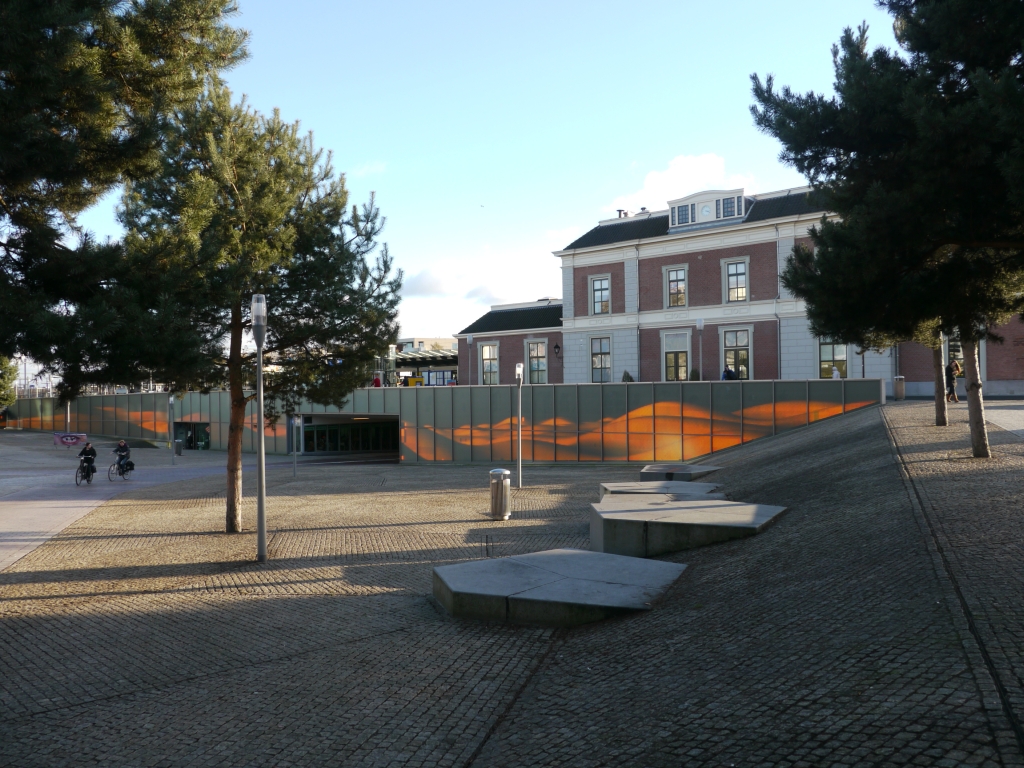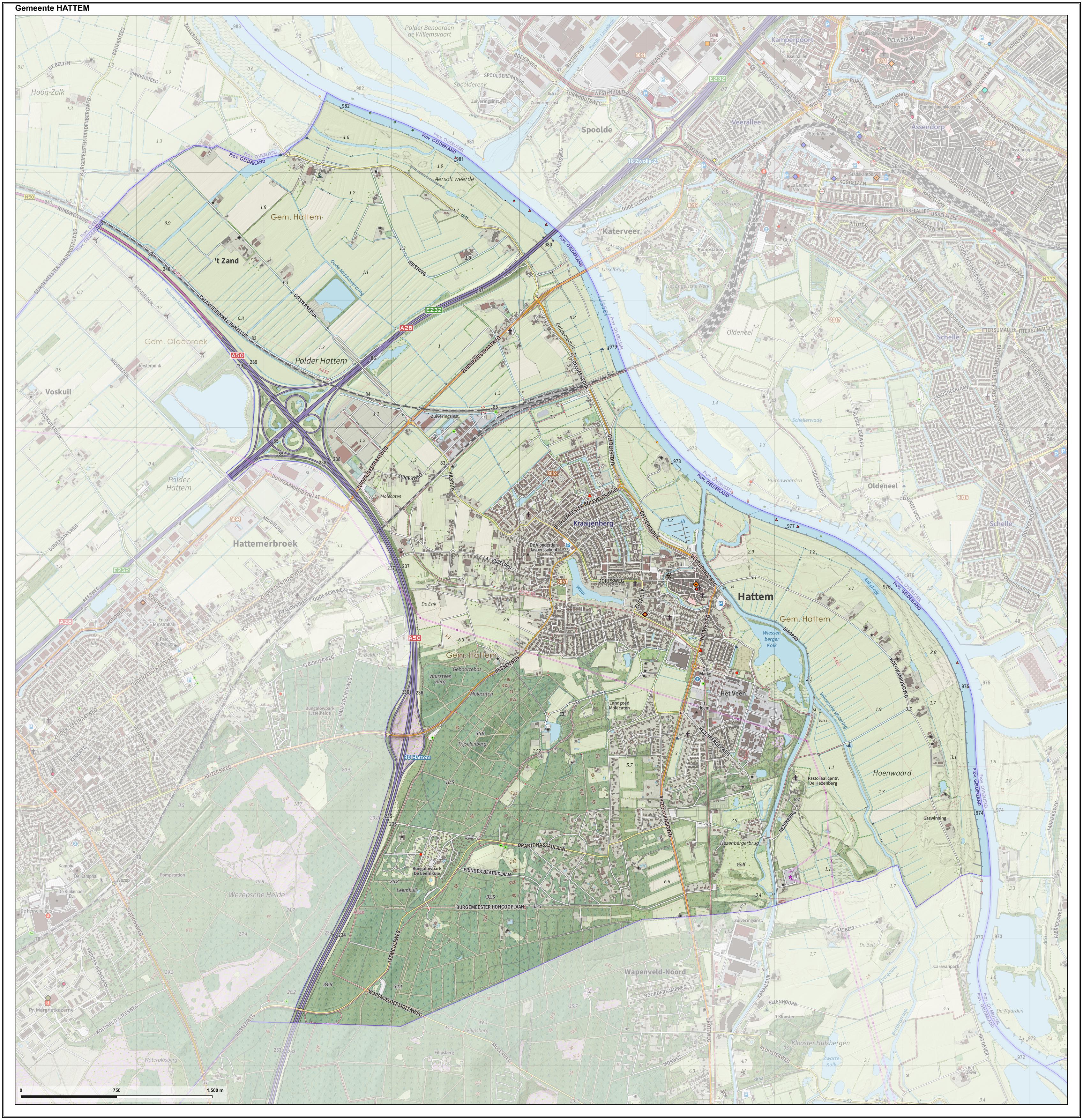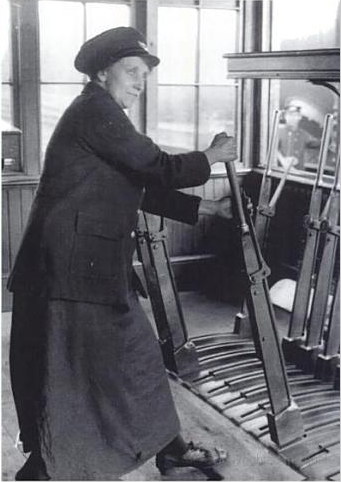|
Apeldoorn–Zwolle Railway
The Apeldoorn–Zwolle railway was a railway in the Netherlands connecting Apeldoorn, Gelderland with Zwolle, Overijssel. The railway was constructed by the Royal Netherlands Railway Company (''Koninglijke Nederlandsche Locaalspoorweg-Maatschappij'', KNLS) and opened between 1887 and 1889. The railway soon earned the nickname Baron Line, thanks to the number of nobles living along the line. The railway was closed in 1950 and largely dismantled in the 1970s. History In 1876, royal palace Het Loo was connected to the Amsterdam–Zutphen railway. Via the Loolijn, the palace could be reached directly from Amsterdam Centraal. One year later, the Royal Dutch Local Rail Company (KNLS) was founded, which built several railways from Apeldoorn, including the railway to Zwolle. West of the Apeldoorn railway station, this new line connected to the Loo line. Just before the palace, the line split to Vaassen, Epe and Hattem. Near Wezep, the line merged into the Utrecht–Kampen railway of the D ... [...More Info...] [...Related Items...] OR: [Wikipedia] [Google] [Baidu] |
Apeldoorn Railway Station
Apeldoorn railway station (; abbreviation: Apd) is a railway station in Apeldoorn in Gelderland, Netherlands. The station was opened on 15 May 1876, on the Amsterdam–Zutphen railway. It was opened when the Amersfoort to Zutphen section was completed. Location The railway station is located at the Stationsplein ( en, Station's Square) in the town center of Apeldoorn in the province of Gelderland in the middle of the Netherlands.Station Apeldoorn (in Dutch), ''Stationsweb''. Retrieved 12 June 2017. It is situated on the between the railway stations of |
Hattem
Hattem () is a municipality and a town in the eastern Netherlands. The municipality had a population of in . The municipality includes the hamlet of 't Zand. Name origin The name “Hattem” is a typical farmyard name. The exact origin of “Hattem” is yet unclear. In general two explanation exist. Hattem would be the ‘heem’ (home) of a people who belong to the tribe of Chattuarii (or Hattuarii or Hatten). A second origin could refer to the leader of a people under the leader Hatto. This fits with the fact that a lot of farmyard names are deduced from persons names. History A document referring to Hattem is found is dated around 800. This document is the Codex Laureshamensis, in which the settlement Hattem is mentioned because two farmhouses in this place are donated to the Lorsch abbey. Established as parish Despite this early statement, no church or chapel was built in Hattem. In 1176 Hattem became a parish (‘kerspel’). The chapel, measuring 17,5 by 9,5 meter, was ... [...More Info...] [...Related Items...] OR: [Wikipedia] [Google] [Baidu] |
Standard Gauge Railways In The Netherlands
Standard may refer to: Symbols * Colours, standards and guidons, kinds of military signs * Standard (emblem), a type of a large symbol or emblem used for identification Norms, conventions or requirements * Standard (metrology), an object that bears a defined relationship to a unit of measure used for calibration of measuring devices * Standard (timber unit), an obsolete measure of timber used in trade * Breed standard (also called bench standard), in animal fancy and animal husbandry * BioCompute Standard, a standard for next generation sequencing * ''De facto'' standard, product or system with market dominance * Gold standard, a monetary system based on gold; also used metaphorically for the best of several options, against which the others are measured * Internet Standard, a specification ratified as an open standard by the Internet Engineering Task Force * Learning standards, standards applied to education content * Standard displacement, a naval term describing the weig ... [...More Info...] [...Related Items...] OR: [Wikipedia] [Google] [Baidu] |
Railway Lines Closed In 1950
Rail transport (also known as train transport) is a means of transport that transfers passengers and goods on wheeled vehicles running on rails, which are incorporated in tracks. In contrast to road transport, where the vehicles run on a prepared flat surface, rail vehicles (rolling stock) are directionally guided by the tracks on which they run. Tracks usually consist of steel rails, installed on sleepers (ties) set in ballast, on which the rolling stock, usually fitted with metal wheels, moves. Other variations are also possible, such as "slab track", in which the rails are fastened to a concrete foundation resting on a prepared subsurface. Rolling stock in a rail transport system generally encounters lower frictional resistance than rubber-tyred road vehicles, so passenger and freight cars (carriages and wagons) can be coupled into longer trains. The operation is carried out by a railway company, providing transport between train stations or freight customer facil ... [...More Info...] [...Related Items...] OR: [Wikipedia] [Google] [Baidu] |
1887 Establishments In The Netherlands
Events January–March * January 11 – Louis Pasteur's anti-rabies treatment is defended in the Académie Nationale de Médecine, by Dr. Joseph Grancher. * January 20 ** The United States Senate allows the Navy to lease Pearl Harbor as a naval base. ** British emigrant ship ''Kapunda'' sinks after a collision off the coast of Brazil, killing 303 with only 16 survivors. * January 21 ** The Amateur Athletic Union (AAU) is formed in the United States. ** Brisbane receives a one-day rainfall of (a record for any Australian capital city). * January 24 – Battle of Dogali: Abyssinian troops defeat the Italians. * January 28 ** In a snowstorm at Fort Keogh, Montana, the largest snowflakes on record are reported. They are wide and thick. ** Construction work begins on the foundations of the Eiffel Tower in Paris, France. * February 2 – The first Groundhog Day is observed in Punxsutawney, Pennsylvania. * February 4 – The Interstate Commerce Act ... [...More Info...] [...Related Items...] OR: [Wikipedia] [Google] [Baidu] |
Railway Lines Opened In 1887
Rail transport (also known as train transport) is a means of transport that transfers passengers and goods on wheeled vehicles running on rails, which are incorporated in tracks. In contrast to road transport, where the vehicles run on a prepared flat surface, rail vehicles (rolling stock) are directionally guided by the tracks on which they run. Tracks usually consist of steel rails, installed on sleepers (ties) set in ballast, on which the rolling stock, usually fitted with metal wheels, moves. Other variations are also possible, such as "slab track", in which the rails are fastened to a concrete foundation resting on a prepared subsurface. Rolling stock in a rail transport system generally encounters lower frictional resistance than rubber-tyred road vehicles, so passenger and freight cars (carriages and wagons) can be coupled into longer trains. The operation is carried out by a railway company, providing transport between train stations or freight customer faciliti ... [...More Info...] [...Related Items...] OR: [Wikipedia] [Google] [Baidu] |
Railway Lines In The Netherlands
Rail transport (also known as train transport) is a means of transport that transfers passengers and goods on wheeled vehicles running on rails, which are incorporated in tracks. In contrast to road transport, where the vehicles run on a prepared flat surface, rail vehicles (rolling stock) are directionally guided by the tracks on which they run. Tracks usually consist of steel rails, installed on sleepers (ties) set in ballast, on which the rolling stock, usually fitted with metal wheels, moves. Other variations are also possible, such as "slab track", in which the rails are fastened to a concrete foundation resting on a prepared subsurface. Rolling stock in a rail transport system generally encounters lower frictional resistance than rubber-tyred road vehicles, so passenger and freight cars (carriages and wagons) can be coupled into longer trains. The operation is carried out by a railway company, providing transport between train stations or freight customer facilit ... [...More Info...] [...Related Items...] OR: [Wikipedia] [Google] [Baidu] |
Signalman (rail)
:''This article deals with rail traffic controllers in Great Britain and Ireland; for similar functions in other jurisdictions, see Train dispatcher.'' A signalman or signaller is an employee of a railway transport network who operates the points and signals from a signal box in order to control the movement of trains. History The first signalmen, originally called Railway Policemen (leading to the nickname of 'Bobby'), were employed in the early 19th century and used flags to communicate with each other and train drivers, and hourglasses for the purpose of Time Interval Working between stations. In South Africa, a local rail signaller named Jack (baboon) achieved some fame for the unique distinction of being a chacma baboon. Additional duties It was a signalman's duty to check each train that passed their signal box, looking for the red tail lamp exhibited on the trailing vehicle, the sighting of which confirmed that the train was still complete, and thus the section was ... [...More Info...] [...Related Items...] OR: [Wikipedia] [Google] [Baidu] |
Spoor Bij Emst
Spoor can mean: * Spoor (animal) Spoor is a trace or a set of footprints by which the progress of someone or something may be followed. Spoor may include tracks, scents, or broken foliage. Spoor is useful for discovering or surveying what types of animals live in an area, or in ..., anything that shows signs of an animal * Spoor (comics) * ''Spoor'' (album), an album by Thin White Rope * ''Spoor'' (film), a 2017 Polish film {{Disambig ... [...More Info...] [...Related Items...] OR: [Wikipedia] [Google] [Baidu] |
Syntus
Keolis Nederland is a public transport company operating bus and passenger train services in the Netherlands. Originally created as Syntus and owned by Connexxion, Keolis and Nederlandse Spoorwegen, since 2012 Keolis Nederland has been a 100% subsidiary of Keolis. Syntus is an acronym for Synergy between Train and Bus. History In 1991 Geldersche Streekvervoer Maatschappij (GSM) and the Dutch Railways started a transport integration project called Integratie Gelderland Oost. Integration between train and bus was the main goal. GSM later merged with Gemeentelijk Vervoerbedrijf Arnhem to form Gelderse Vervoersmaatschappij. In 1999 Syntus commenced rail operations, Connexxion, Keolis and Nederlandse Spoorwegen each owning one-third. In 2007 Connexxion's share was purchased by Keolis and Nederlandse Spoorwegen. In 2012 Keolis purchased Nederlandse Spoorwegen's 50% share. In October 2017, Syntus was rebranded Keolis Nederland with a new visual identity. Visgraatmodel Syntus propaga ... [...More Info...] [...Related Items...] OR: [Wikipedia] [Google] [Baidu] |
IJssel
The IJssel (; nds-nl, Iessel(t) ) is a Dutch distributary of the river Rhine that flows northward and ultimately discharges into the IJsselmeer (before the 1932 completion of the Afsluitdijk known as the Zuiderzee), a North Sea natural harbour. It more immediately flows into the east-south channel around the Flevopolder, Flevoland which is kept at 3 metres below sea level. This body of water is then pumped up into the IJsselmeer. It is sometimes called the Gelderse IJssel (; "Gueldern IJssel") to distinguish it from the Hollandse IJssel. It is in the provinces of Gelderland and Overijssel. The Romans knew the river as Isala. It flows from Westervoort, on the east side of the city of Arnhem. Similar to the Nederrijn which shares its short inflow, the Pannerdens Kanaal, it is a minor discharge of the Rhine. At the fork where the Kanaal is sourced the Rhine becomes named the Waal. This splitting-off is west of the German border. The Waal in turn interweaves with other rivers ... [...More Info...] [...Related Items...] OR: [Wikipedia] [Google] [Baidu] |
Utrecht–Kampen Railway
The Utrecht–Kampen railway (also known as ''Centraalspoorweg'') is an important railway line in the Netherlands running from Utrecht to Kampen, passing through Bilthoven, Amersfoort, Nijkerk, Ermelo, Harderwijk, Nunspeet, Wezep and Zwolle. The line was opened between 1863 and 1865 by the Nederlandsche Centraal-Spoorweg-Maatschappij. Its northern part (Zwolle– Kampen) is known as the ''Kamperlijntje'', currently operated by Keolis Nederland. Stations The main interchange stations on the Utrecht–Kampen railway are: *Utrecht Centraal railway station to Amsterdam, Rotterdam, Arnhem and Eindhoven *Amersfoort railway station to Apeldoorn, Enschede and Amsterdam *Zwolle railway station to Arnhem, Groningen, Leeuwarden, Emmen and Almelo Gallery File:2-Ermelo - station - 2014.JPG, Ermelo railway station File:NS DDZ 7540, Holkerveen (15232257053).jpg, NS DD-AR between Nijkerk and Vathorst, near Holkerveen File:Station Amersfoort Vathorst, september 2012.jpg, Amersfoort Vathorst ... [...More Info...] [...Related Items...] OR: [Wikipedia] [Google] [Baidu] |







